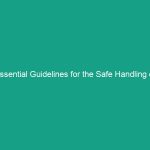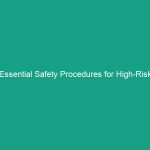Good morning team!
Today, we’re diving into an important topic that impacts not only our daily operations but also the integrity of our work Environment: Essential Data Security on Job Sites: Protecting Sensitive Information. In the age of digital information, protecting sensitive data is crucial, especially on job sites where the potential for Data Breaches is high. Let’s discuss why this matters, how it affects us, and the steps we can take to safeguard our information.
Understanding Essential Data Security on Job Sites
Data security refers to the practices and technologies used to protect sensitive information from unauthorized access, corruption, or theft. In our line of work, this includes everything from employee personal information to proprietary project data. Ensuring data security is not just an IT issue; it’s a responsibility that falls on all of us.
Many employees may think that data security only pertains to office environments or IT departments, but this is a misconception. On job sites, we handle various sensitive information daily, and failing to protect it can lead to significant repercussions, including financial loss and damage to our company’s reputation.
Key Hazards, Risks, and Safety Considerations
When we talk about data security, it’s important to recognize the specific Hazards and risks related to our job sites:
- Unauthorized Access: Physical documents or devices left unsecured can be accessed by unauthorized individuals.
- Data Breaches: Cyber-attacks targeting unprotected networks can lead to stolen sensitive information.
- Loss of Devices: Laptops, tablets, and smartphones that are lost or stolen can pose significant risks if they contain sensitive data.
Ignoring these risks can lead to severe consequences. For instance, a data breach could result in loss of client trust, legal ramifications, and financial penalties. Therefore, it’s vital to be aware of these risks and take proactive steps to mitigate them.
Best Practices, Procedures, & Actionable Advice
To effectively protect sensitive information, here are some Best Practices that we should all implement:
1. Secure Your Devices
Always lock your devices with strong passwords or biometric security when not in use. Ensure that devices are encrypted, so even if they are lost or stolen, the data remains protected.
2. Use Secure Connections
Whenever accessing company information online, ensure that you are connected to a secure network. Avoid using public Wi-Fi for work-related tasks; instead, use a VPN (Virtual Private Network) to encrypt your connection.
3. Keep Software Updated
Regularly update all software and applications to protect against security vulnerabilities. This includes operating systems, antivirus programs, and any other software used in our daily tasks.
4. Be Aware of Phishing Attempts
Be cautious about emails or messages requesting sensitive information. Always verify the source before clicking on links or downloading attachments. If something seems off, trust your instincts and report it.
5. Dispose of Sensitive Information Properly
When disposing of physical documents that contain sensitive information, ensure they are shredded. For digital files, use secure deletion methods to ensure they cannot be recovered.
6. Conduct Regular Training
Participate in regular training on data security Best Practices. Understanding current threats and the latest security measures can significantly enhance our ability to protect sensitive information.
Case Study: A Lesson Learned
Consider the incident where a construction company lost a laptop containing sensitive project data. The device was stolen from an unsecured area, leading to a data breach that not only jeopardized ongoing contracts but also resulted in hefty fines. This incident underscores the importance of adhering to data security protocols and being vigilant at all times.
Regulations, Standards, and Compliance
Compliance with data protection Regulations is non-negotiable. Familiarize yourself with key regulations such as:
- OSHA Standards: Ensures Workplace Safety, including safeguarding sensitive information.
- GDPR: If we handle data from European clients, this regulation mandates stringent data protection measures.
- HIPAA: For those in healthcare-related projects, ensuring patient data privacy is crucial.
Understanding and complying with these regulations protects not just the company but also each of us as employees. Failing to comply can lead to severe penalties and damage our integrity in the industry.
Employee Engagement & Discussion
Now that we’ve covered the importance of data security and best practices, let’s open the floor for discussion. Here are some questions to consider:
- What Safety challenges have you encountered related to data security on the job site?
- Can you share any personal experiences where data security protocols were particularly beneficial?
- How can we improve our current practices to better protect sensitive information?
Your insights are invaluable, and together we can foster a safer and more secure work environment.
Conclusion & Key Takeaways
In conclusion, protecting sensitive information on job sites is a shared responsibility that requires diligence and awareness from all employees. The best practices we discussed today—securing devices, using secure connections, and being vigilant against threats—are essential to maintaining data integrity.
Let’s commit to prioritizing data security in our daily tasks, ensuring that we not only protect ourselves but also our colleagues and our company. Thank you all for your attention and dedication to making our workplace safer. Let’s keep the conversation going and continue to support each other in these efforts!


